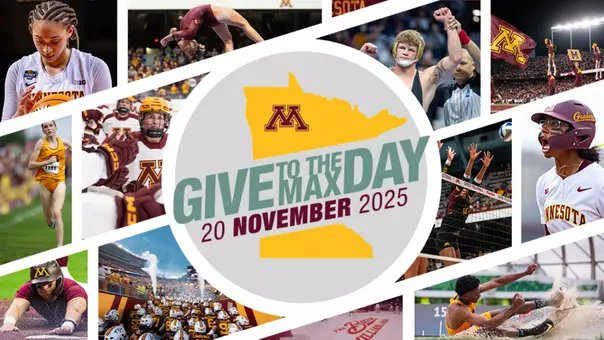University of Minnesota Athletics
Ask the Doctor - Tria
5/19/2006 12:00:00 AM | Athletics
Q: What's the best way to tell how long a sports injury will sideline me?
A: Every athlete and every injury is unique, so only your sports medicine physician or orthopaedic specialist can give you a timetable for returning to practice or play. I can tell you that it's extremely important not to go back too soon; it can increase your risk of re-injury and significantly lengthen your recovery time, sometimes even leading to chronic conditions.
The best ways to speed your recovery time include year-round conditioning before injury occurs, prompt assessment and treatment of your injury, a full functional rehab program and a positive attitude. Even when you feel 100 percent, you need to make your return gradually and give your joints and muscles time to regain strength, flexibility and skill.
Q: I work really hard at practice and judging from the way I feel afterward, I'm probably overdoing it. How can you tell normal aches and pains apart from more serious strains and injuries?
A: When you first start a new activity, you'll probably experience muscle soreness, aches and pains that can be treated with heat, ice or over-the-counter pain relievers. As you continue to practice or perform an activity, you shouldn't experience significant pain unless the amount, duration or frequency of your activity increases or changes significantly. If you feel pain during an exercise or drill, see a doctor. You don't want to risk a strain or injury becoming serious because it's left untreated.
Q: What's the most common sports injury for college athletes?
A: Sprains and strains are the most common sports injuries for college-age and professional athletes. A sprain is an injury to the ligament around a joint, such as an ankle turn. A sprain can be mild (involving some pain or swelling) or severe (involving looseness around the joint and more acute pain). Strains are injuries to the muscles in the body, such as a hamstring pull. Muscle strains are also graded from mild (some pain and tightness) to severe (tearing of the muscle fibers). Both strains and sprains can be treated with rest, ice, compression and elevation, but it's recommended that you have moderate to severe strains and sprains examined by a physician.
Q: What kinds of precautions can I take against muscle strain?
A: The best thing you can do to guard against muscle strain is take time to stretch, both before and after you exercise. After a brief warm-up, stretch your large muscle groups, focusing on the muscles you'll use during your activity. Never stretch farther than is reasonably comfortable. Cool-downs are just as important because they reduce your heart rate, prevent pooling of blood within your muscles and allow waste products to be removed from your muscles, which contributes to minimizing soreness.
Q: I know that I don't eat very well, but I feel like it's hard to maintain a well-balanced diet when I'm always on the go. As a busy student athlete, how can I eat better and get healthier if I'm hardly ever at home?
A: No matter how busy you are, it's time to start eating right to maintain your health. Even the fittest athletes are fooling themselves if their diet is full of the refined sugar, artificial sweeteners, high fructose corn syrup and trans fats that are all too typically found in fast and packaged foods. It's really not that hard to make healthier decisions, even on the go. Invest in a cooler or insulated lunch bag and take water, fruit, whole grains, low-fat yogurt and granola bars with you on the road. If you have to eat at a fast food restaurant, head for the salad bar or choose their grilled meat, fish or poultry, baked potatoes and healthy soups. Skip the fries. Your heart will thank you and so will your coach.
Q: What are some of the most commonly overlooked sports injuries?
A: There are a number of injuries that are often overlooked because athletes get used to feeling aches and pains from time to time and don't realize the severity of some injuries. The most common examples are:
- Concussions (resulting from any blow to the head or fall involving the head)
- Achilles tendon ruptures (partial ruptures cause very little pain, so they're often not brought to a physician's attention)
- Anterior Cruciate Ligament (ACL) injuries (typical with sports that require abrupt stops and turns)
- Scaphoid fractures (wrist fracture that's often misdiagnosed as a sprain) and
- Femoral Neck stress fracture (large thigh bone fracture that's difficult to diagnose but common among runners who increase the intensity of their training).
Be sure to see a physician if you experience any of these injuries or suspect that something is more serious than a minor strain or sprain.




